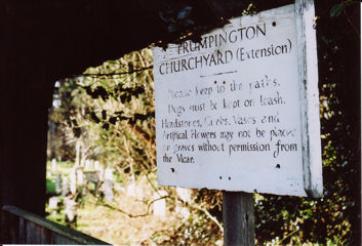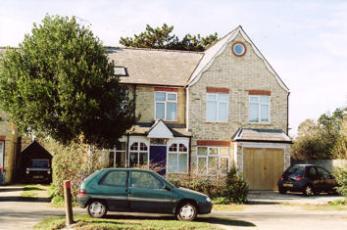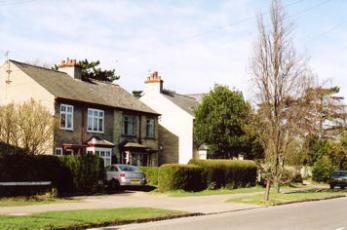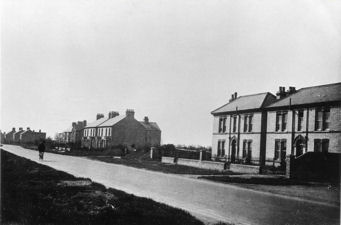Jean Clews in conversation with Howard Slatter
This is the second part of Jean Clews’s recollections of Shelford Road, Bishop’s Road and Trumpington. For an introduction to the series, see Recollections of Shelford Road, 1920s to 1950s.

Shelford Road from the 1920s to 1950s


Mrs Pamplin was also responsible for initiating the development of Shelford Road on the west side. She bought a plot of land next to the cemetery and built a small detached house to sell (28 Shelford Road). Having sold it she then had the next pair built, and sold those when completed (30-32 Shelford Road). Although the pair beyond these appears to have been built by the same builder, William always said that his mother did not finance them (34-36 Shelford Road). Other houses were built at various times, until the whole side as far as the railway bridge was completed. It was much later that a house was demolished to provide access for Cranleigh Close and Craven Close.

In the Second World War, all the iron railings in the front of 80 and 82 Shelford Road were taken away to be melted down as part of the war effort. After that, people waiting for the bus sat on the wall. Mrs Pamplin used to go out “like a witch on a broomstick” and send them packing. She got so fed up with this that she painted wet tar along the wall; some young man in a smart suit sat on it and there was a dust-up about it! William told me that, so it must be true. The wall of number 82 was rebuilt, because at one time the number 115 buses used to turn round here; they would reverse over the road in the Showground entrance and then come and wait outside the house. Some smart driver decided he wouldn’t do this, and turned into Bishop’s Road and reversed back round the corner. As a result he backed into the wall, so that’s why it’s not quite the same as number 80. The original railings were looped at the top, unlike their modern replacements. (For more information about bus services, see Barry Clark‘s recollections.)
After Mrs Pamplin, the owner of 80 Shelford Road, died in the 1950s, the Harmans, who still had their own house in Stapleford, wanted to get a place in Stapleford big enough for all of them. But the land was so expensive that in the end they decided to cut off a piece of land behind 80 Shelford Road and build a bungalow (5 Bishop’s Road). It was built with no steps and specially wide doors, so the wheelchair could get through easily. They built the bungalow, and then they sold the house they’d been living in to pay for the bungalow.
At some stage they must have sold number 82, as it was privately owned by the time I came here. We moved into number 80 at the beginning of 1959.
William Harman Pamplin and Emmy Harman, his cousin’s wife, told me all of this.
Continue with the third part of Jean Clews’s recollections of Shelford Road, Bishop’s Road and Trumpington.